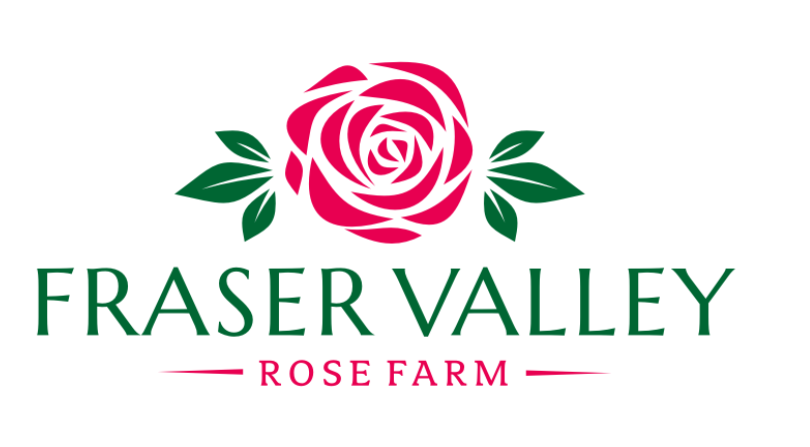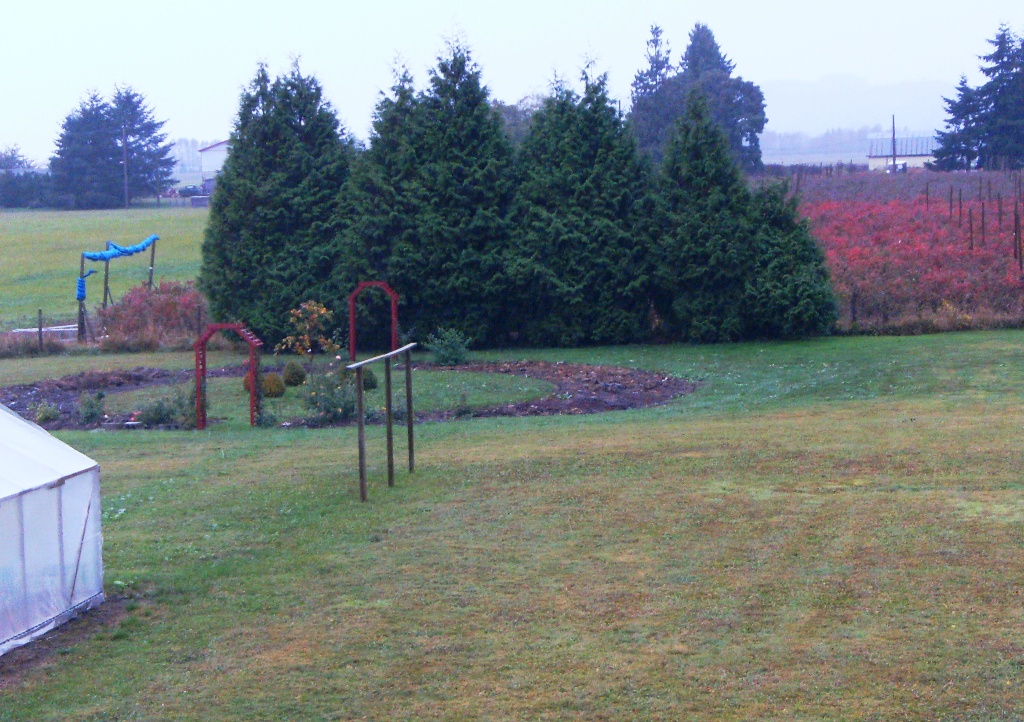Generally speaking, I don’t need to have much of a reason to put in a new garden bed. When we moved onto the farm in 2011, the greater portion of the yard was something like 2 full acres of lawn, so I knew it wouldn’t be long before I started carving some of it out for plantings. I did hesitate, however, to do a rose garden.
I know it may be a bit funny for a guy who is now growing and selling roses, but I’ve always viewed the dedicated rose garden with some suspicion. Raised beds – geometric shapes – formality – bedding roses… lots and lots of bedding roses, with their bare canes angling out unattractively from a bare tarmac of landscape mulch – it’s what I’ve seen in dedicated rose gardens before that runs counter to my gardening style.
Still. I. Must. Garden. And if I’m going to grow primarily roses in my greenhouses, I’ll need to have a place to show some of them off.
I started by looking at some pictures and taking out some books from the library. I tried to keep an open mind about what kind of rose garden would show the plants off most effectively. Unexpectedly, at least to me, I decided on something a bit formal for the bed layout.
It’s a fairly large circular bed with lawn on the inside and outside. Lisa and I re-purposed six boxwood shrubs that we found in an overgrown part of the yard. We planted them in the center of the inner lawn, around what will likely be the most expensive plant in the garden, a red horse chestnut tree(Aesculus x. carena ‘Briotti’) that we picked up at Cannor.
We put in arbors on either end of the garden (I know, I know – there’s no “end” on a circle – but that didn’t really stop us). We put in some plastic edging to stop the lawn from creeping in, dumped a pile of yard waste down to smother the grass.
Here, have a look:
The neighbor’s field of blueberries is that bright red in the background. Sort of steals the show this time of year.
I dug in the obligatory climbing rose for the sides of each arbor. ‘City of York’ and ‘Amadis’ for the front, ‘Polka’ and ‘Souvenir de Docteur Jamain’ at the back. That leaves plenty of space to fill in the big empty semi-circles that connect them.
Aside from the geometric layout, I’ve decided to play it pretty casual for this garden. I immediately planted a couple of Buddleia x. weyeriana shrubs on either side of the front arch, and a couple of Leycesteria formosa to frame the back arch. I have to admit to being quite eager to get some non-rose plantings in the ground, as if a delay might jeopardize my resolve to mix the roses with other shrubs, perennials and herbs. Rather than a dedicated roses garden, my current plan is to make it a mixed border that will happen to feature a large number of roses.
I recently visited the rose garden at Fraser River Heritage park in nearby Mission. Not a bad little garden, but a chuckled a bit when I saw the sign asking visitors not to touch the roses. Frick. You may as well go to a gallery to see still-life paintings. If the garden is any kind of an art form, the advantages of the medium include its changing nature, imperfection, and interactivity. You should touch the roses, hopefully not in the pokey places. You should smell them too. If anyone reading this site is ever moved to visit my rose garden (hopefully after a season or two, when I’ve filled it up a bit) I may insist that you pluck a rose or two for yourself. That’s the beauty of working with a living medium… if your interaction should change it, that’s expected. More roses will grow. It’s what they do!

